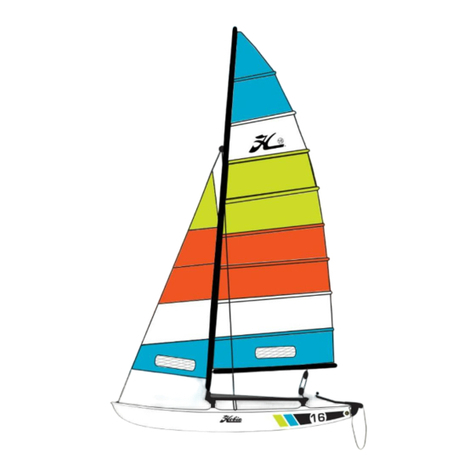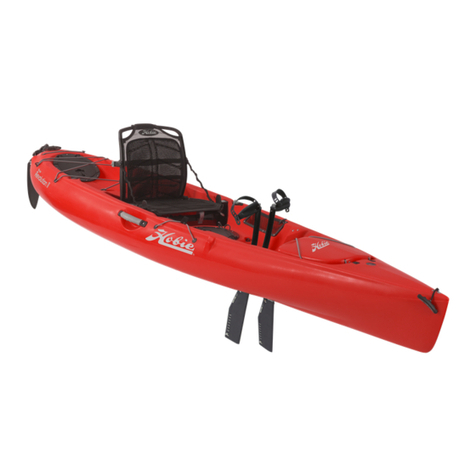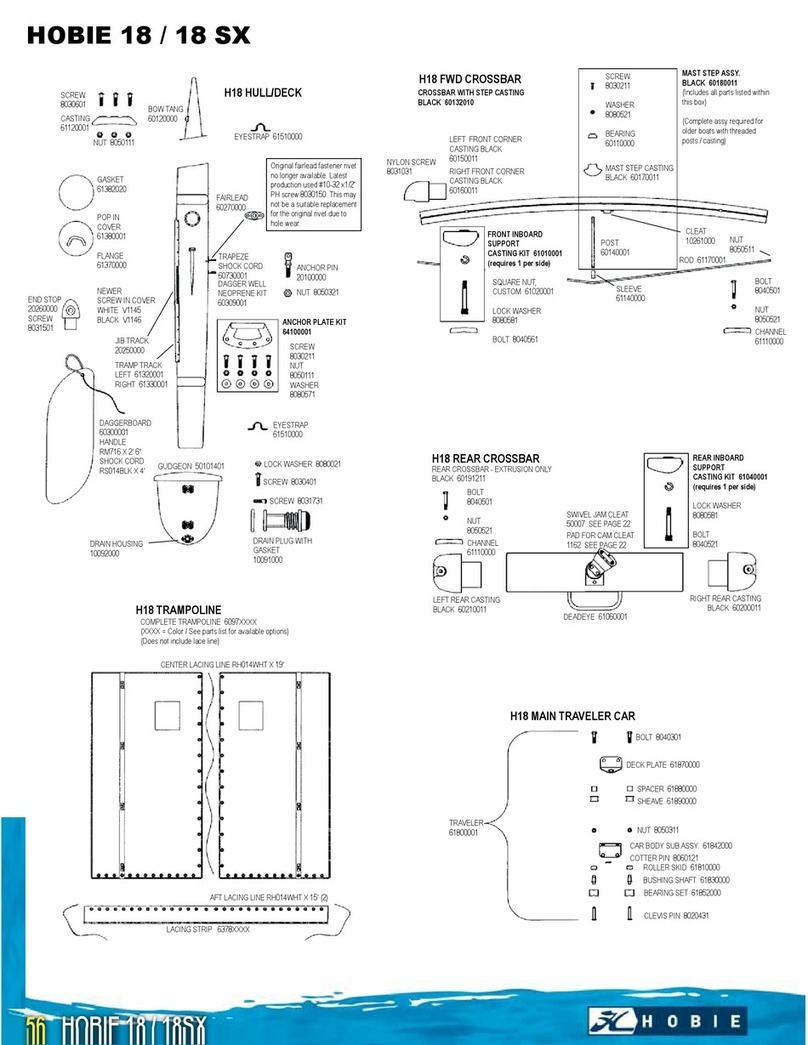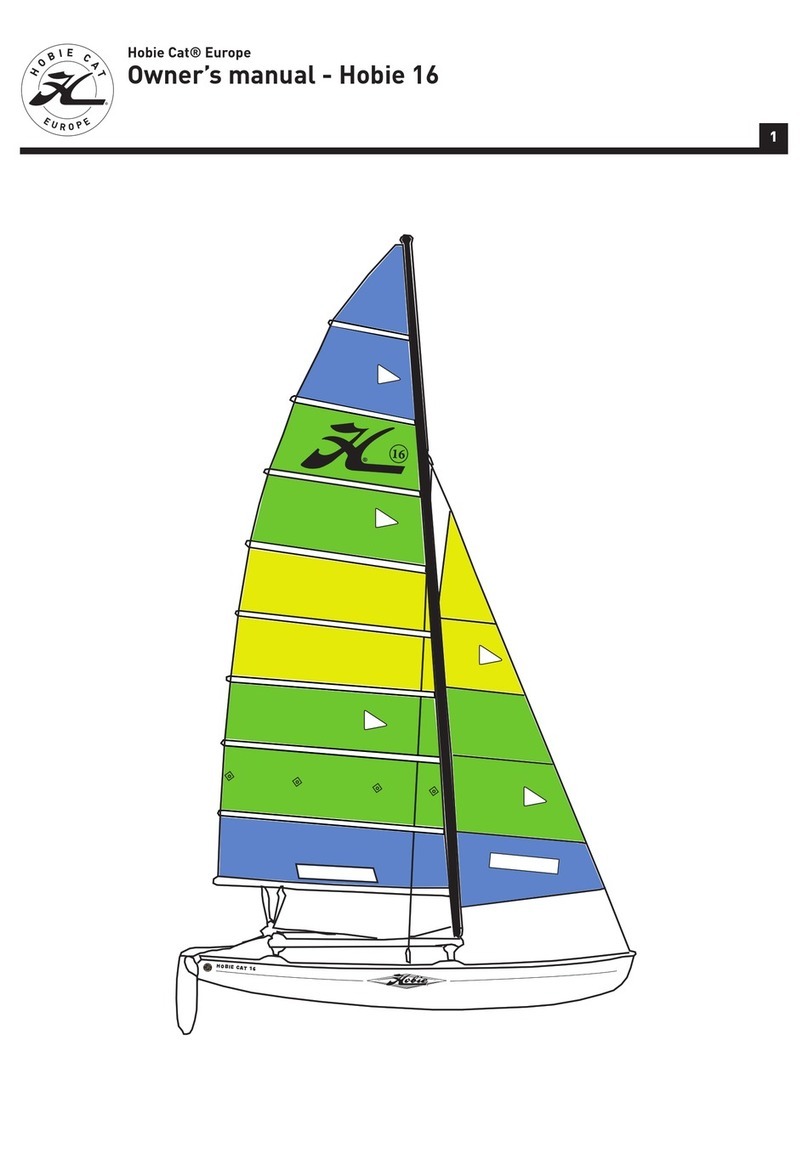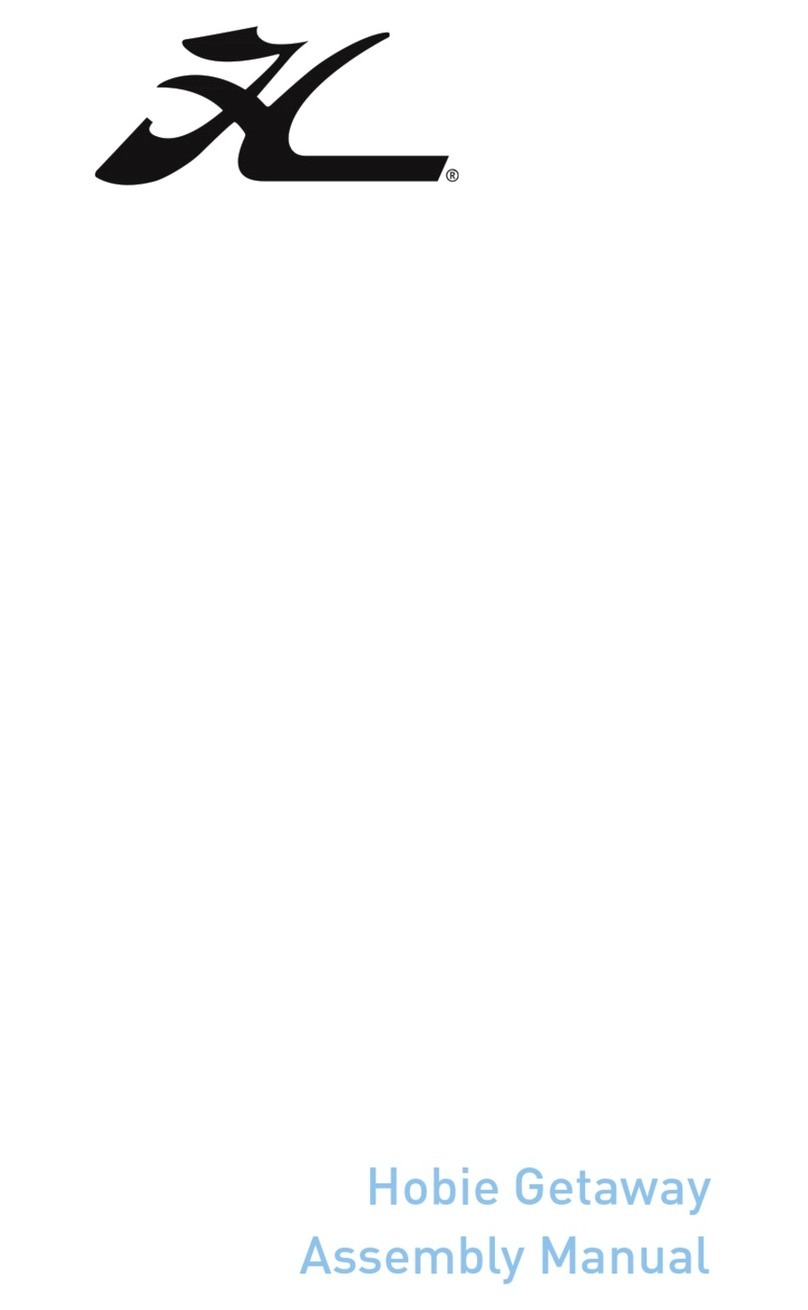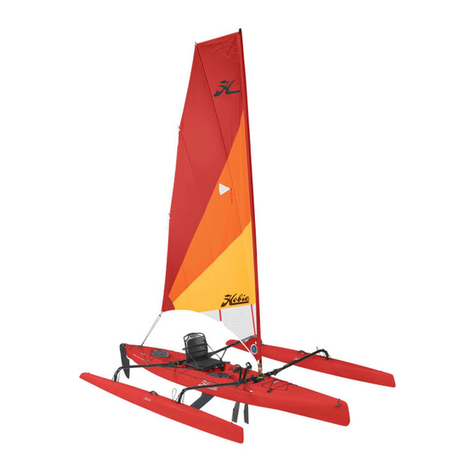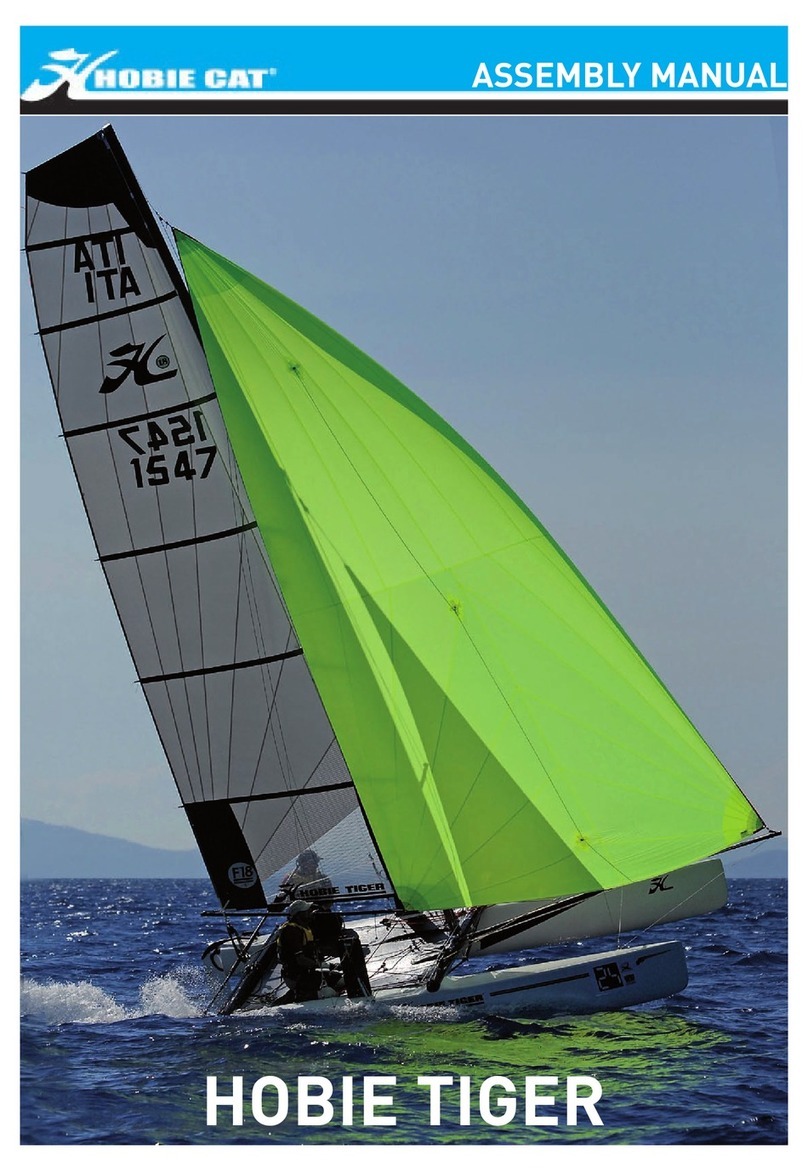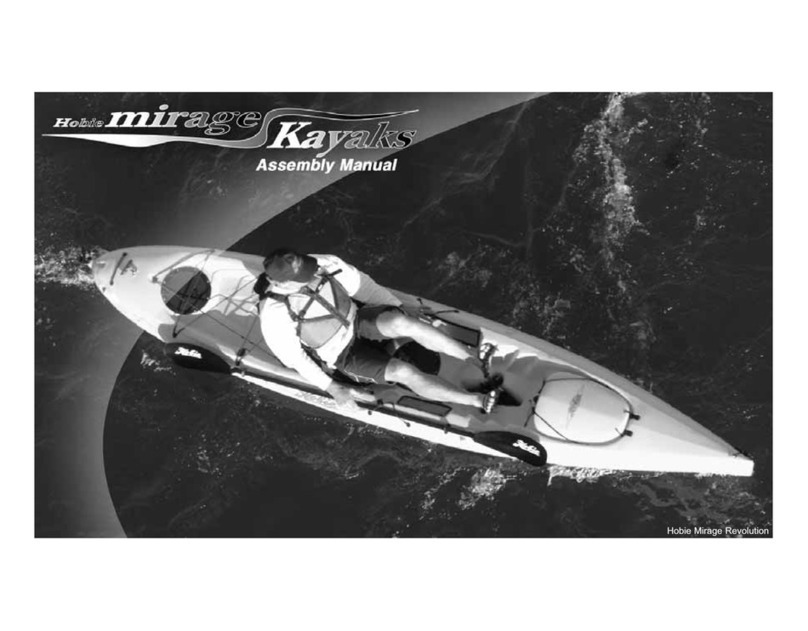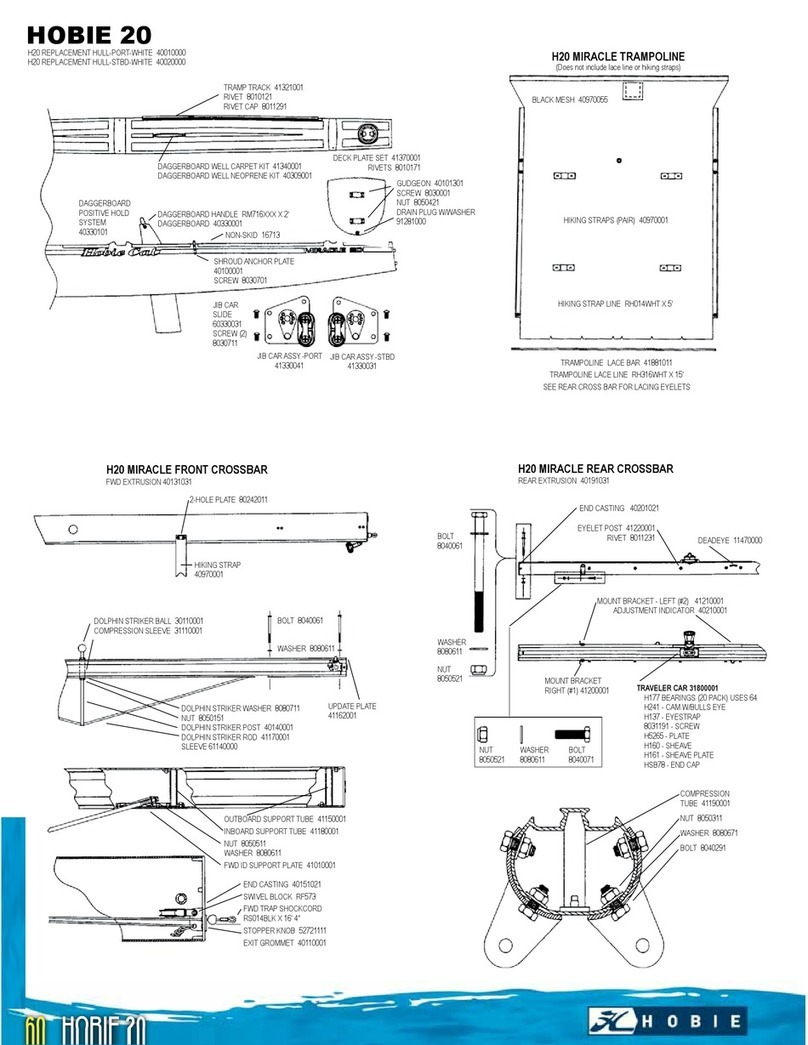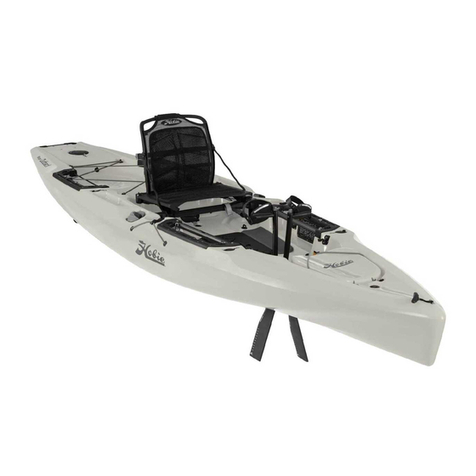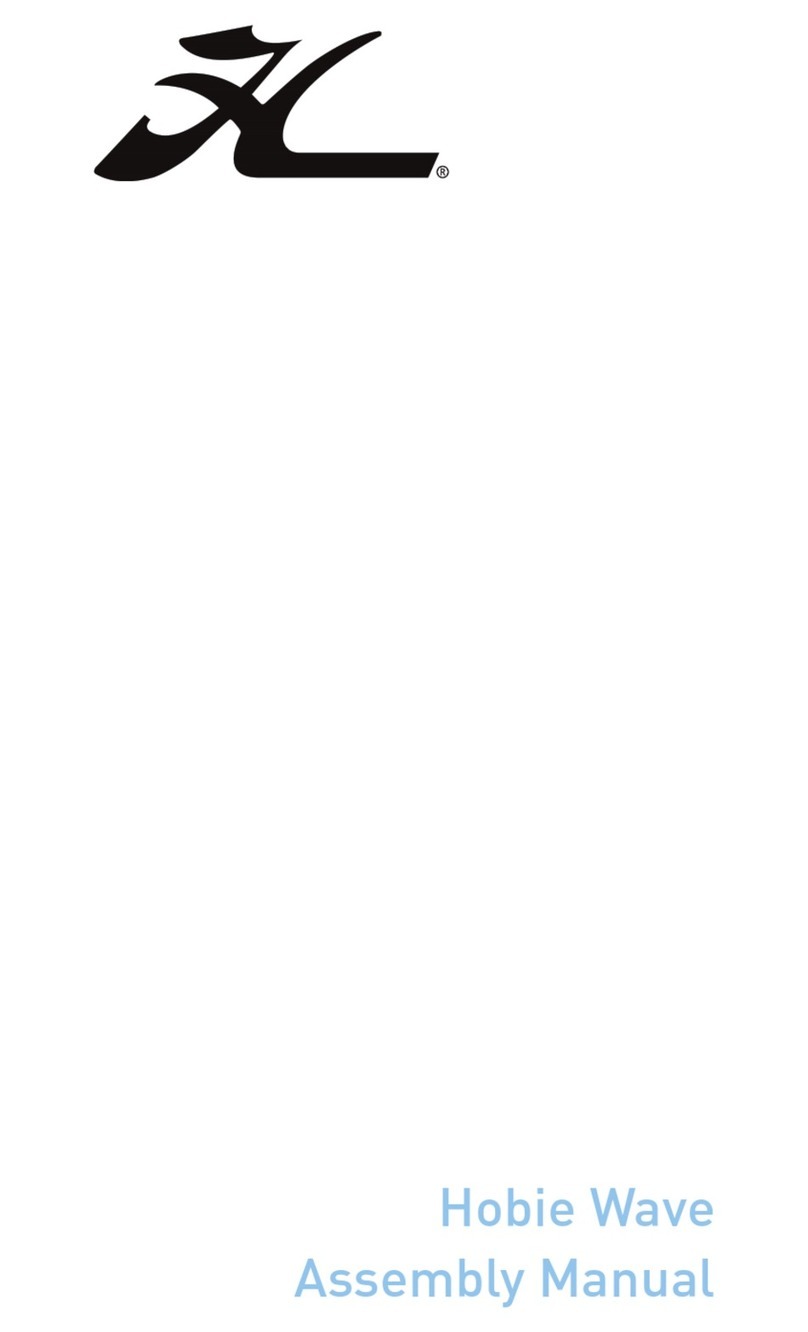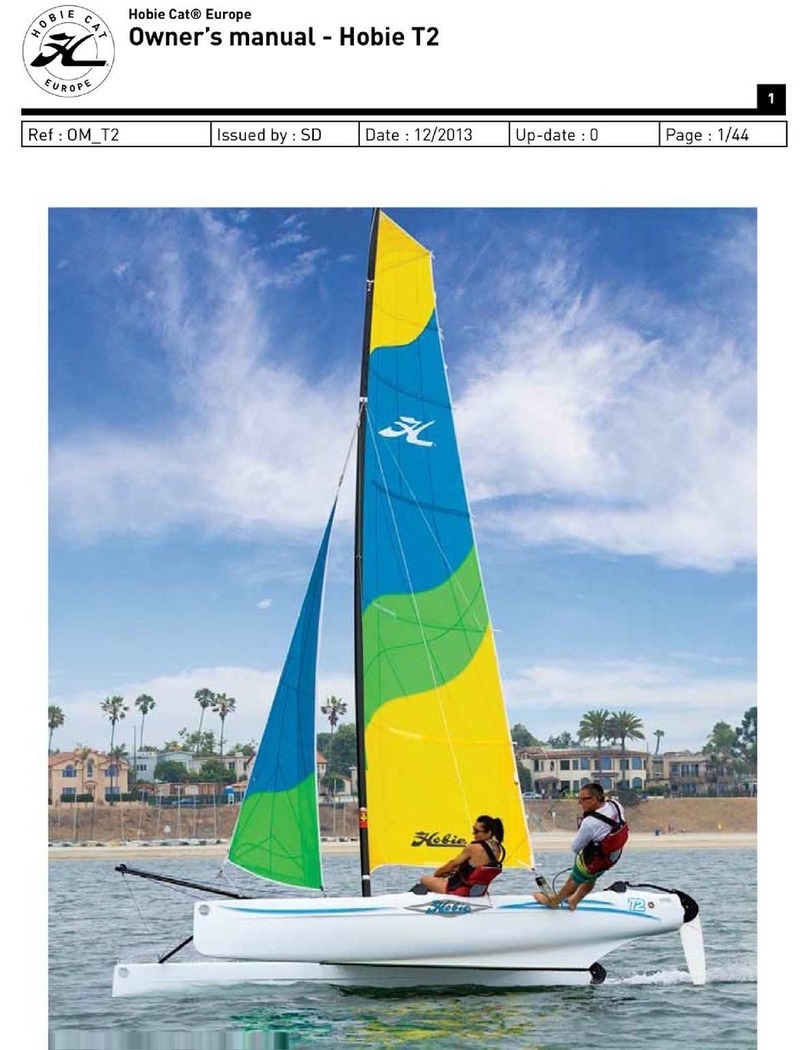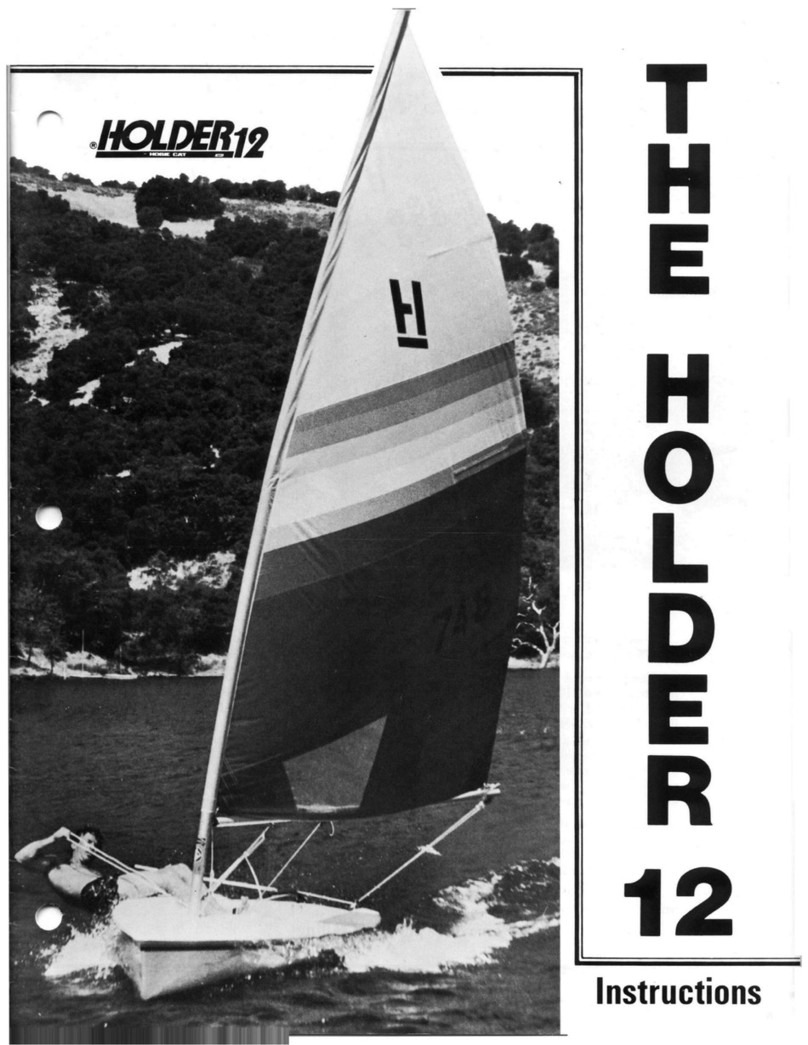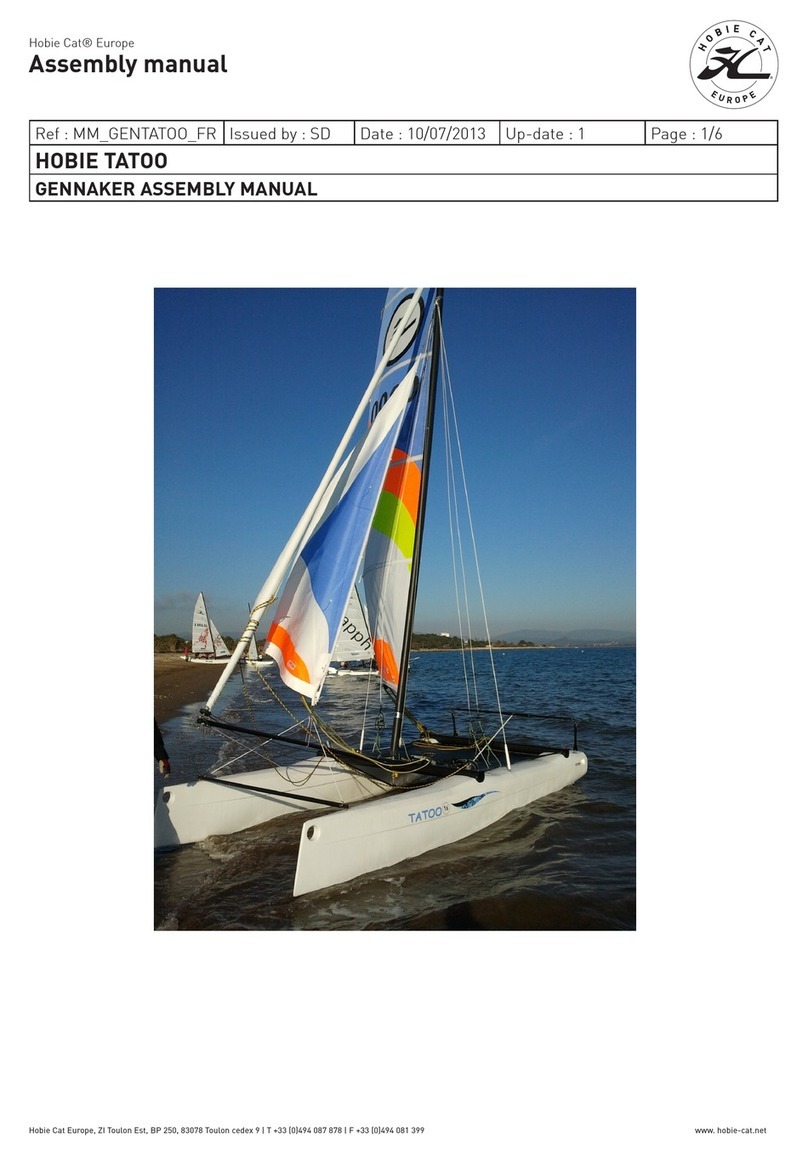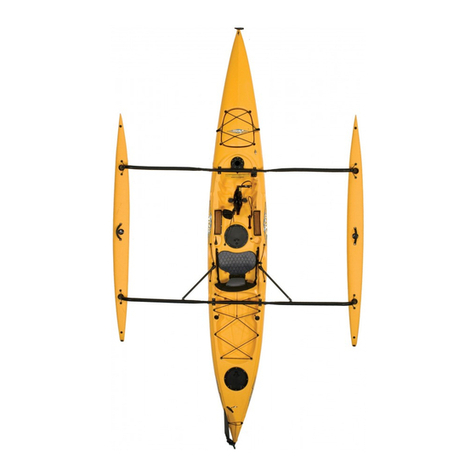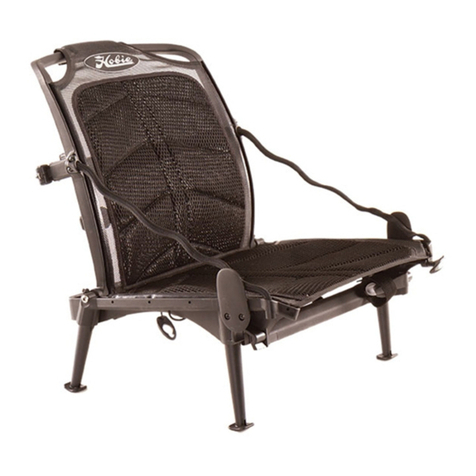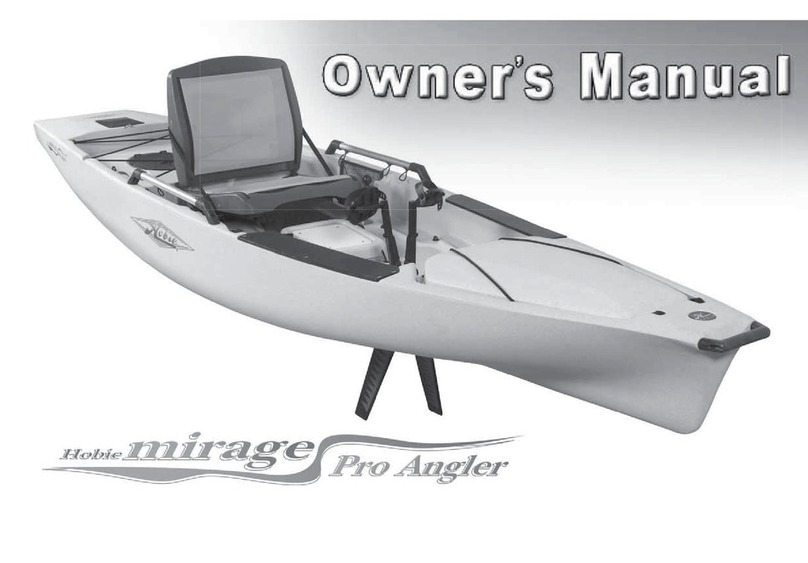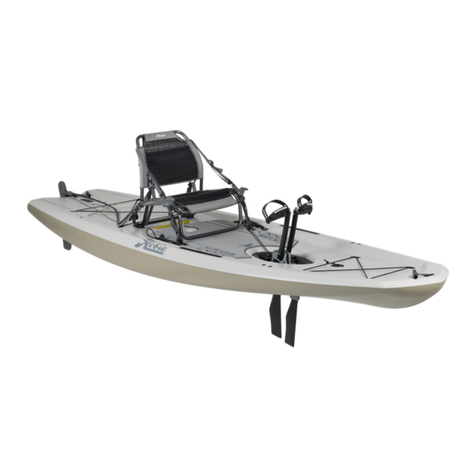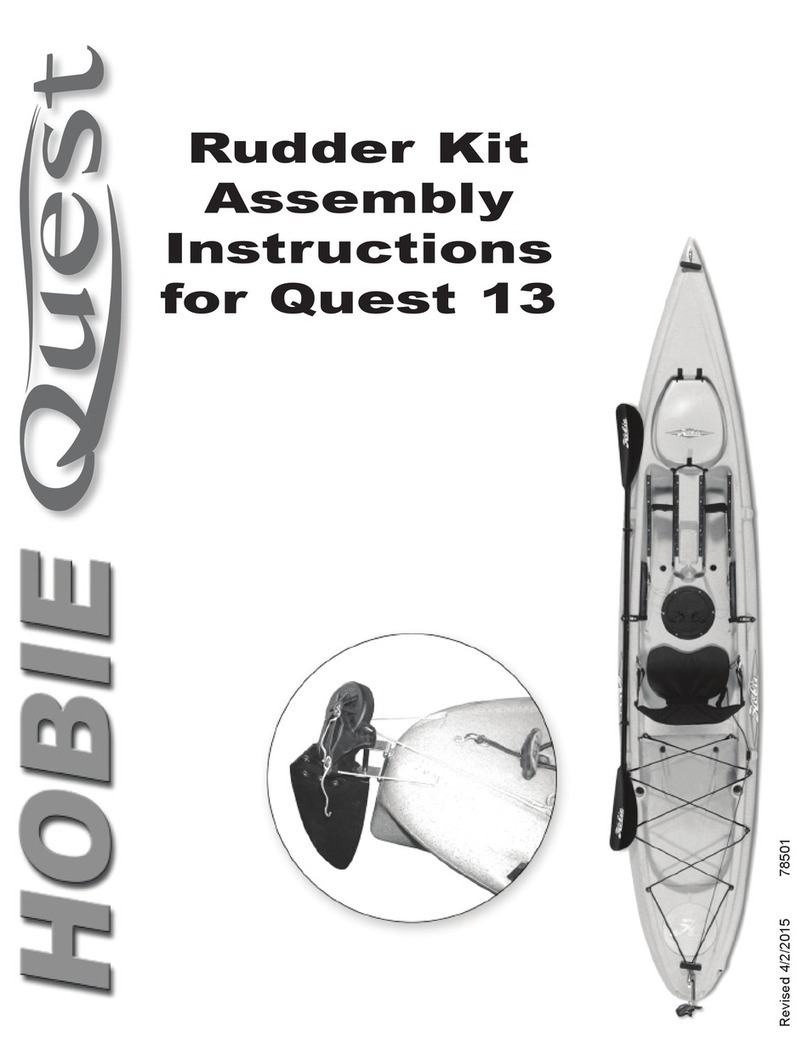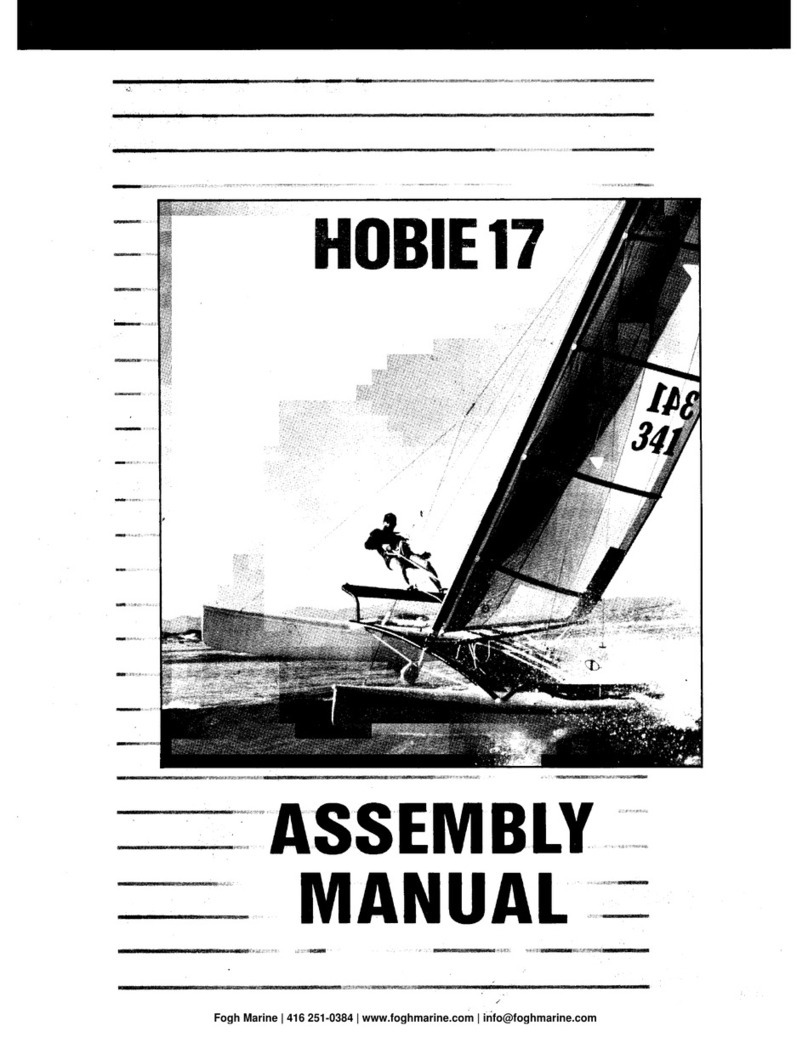Ref : MP_QUEST Issued by : IR Date : 12/2011 Up-date : 0 Page : 8/16
KAYAK HOBIE QUEST
OWNER’S MANUAL
Copyright HCE 2011 - www.hobie-cat.net
Illustration steps Description
2
Adjusting the Steering Lines for your Leg Length
To adjust the steering lines, it helps to be sitting in the
kayak and the rudder needs to be in the down position.
Make sure that the small steering lines are not tied
around the low profile cleats. Adjust the pedals so they are
in the position that is most comfortable for you.
Place your feet on the pedals and keep some pressure on
them so they don’t move and are in a comfortable position.
Using your right and left hands, grab the steering lines
that are coming back to you after wrapping around the
pulley in the corner of the pedal. Try pulling on one of the
lines and look back at the rudder. You’ll notice that by pul-
ling on one line, the rudder will turn. Pulling on the other
line will make the rudder turn in the other direction.
•
•
•
•
3
You want to adjust the amount of pull on each line so the
rudder is straight. With the rudder straight, keep pressure
on the pedals and pull the lines tight.
Lower the lines and wrap the slack in the line around the
cleats in the cockpit.
•
•
4
As the extra line wraps around the cleat, test their ten-
sion by putting your feet against the pedals and see how
comfortable they are. If you want the pedals to be more
vertical, wrap another loop around the cleat. If you want
them more horizontal, let out a loop from the cleat. This
rudder adjustment system allows you to fine tune the trim
of the pedals to where it is most comfortable for a range
of users. You may want to wrap a smaller loop around one
horn of the cleat to make slight adjustments.
•
Using the rudder on the water
Once all your steering lines are trimmed, you are ready for the water. The rudder operation is very simple. By rolling the
right pedal forward, you turn right. Rolling the left pedal forward will make you turn left. It typically requires very little
turn in the rudder to help you maintain a straight course in a strong crosswind or current.
If it feels like your steering is a bit loose, you probably need to re-adjust your steering lines. Roll both pedals back toward
you so that it is just beyond where is it most comfortable and retension the steering lines on the cleat. When you put your
normal pressure on the pedals, the lines will settle a bit and the pedals will adjust back to their optimal comfort angle.
Assembly manual - Adjust the steering lines
